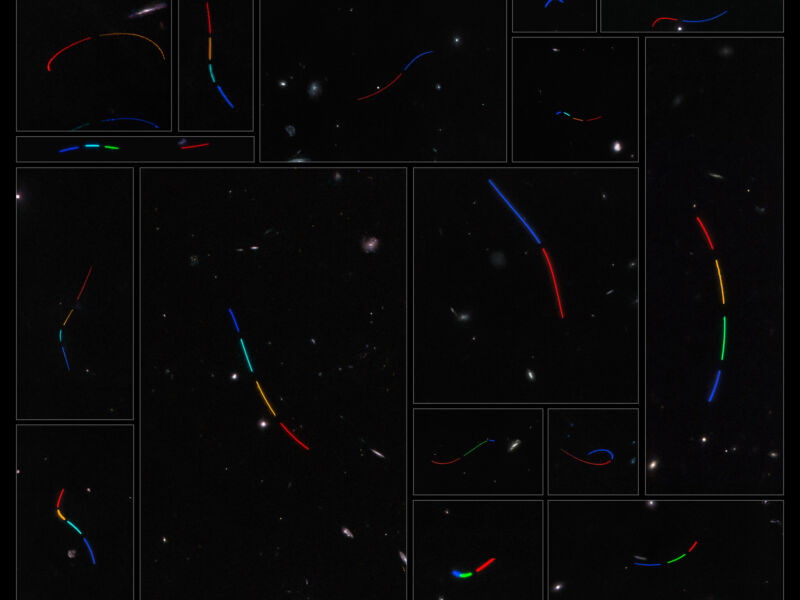On International Asteroid Day in 2019, a group of research institutions launched a program that could make a deep impact on our knowledge of the diminutive bodies. Using citizen science to train a machine-learning algorithm, the Hubble Asteroid Hunter project identified more than 1,000 new asteroids; the discoveries could help scientists better understand the ring of heavenly bodies that primarily float between Mars and Jupiter.
Asteroid Hunter is a collaborative effort between various groups, including the European Science and Technology Centre, the European Space Astronomy Centre’s Science Data Centre, the Zooniverse citizen science platform, and Google.
In 2019, the researchers sent out a call for citizen scientists to collaborate on the crowd-sourced effort. Through the Zooniverse platform, 11,400 members of the public from around the world identified asteroid trails in 37,000 composite images taken by the Hubble Space Telescope between 2002 and 2021. The citizen scientists pored over the images for a year and identified more than 1,000 trails.
“Hubble is an amazing mission, and it produced a very rich database of astronomical observation over the years that we should take advantage of," Sandor Kruk, a postdoc at the Max Planck Institute for Extraterrestrial Physics, told Ars. “We should pay more attention to this long time span of data [that is] starting to be available.” Kruk is involved with Asteroid Hunter.
Searching the sky
The results of the citizen science work were used to train a machine-learning algorithm called AutoM, which was created by Google. When provided with enough data, the algorithm can now be used to quickly classify images.
According to Kruk, there is a lot of diversity in the asteroid trails picked up by Hubble. Normally, when taking a long-exposure image of an asteroid from the ground, the resulting trail in the image is a line. But the combined movement of the asteroids with Hubble’s movement produces curved trails. These are harder to classify using machine learning because they come in a wide variety of shapes.
“That’s why you needed a sample of them detected by humans,” Kruk said. “What took us a year to classify with the citizen scientists—it took only about 10 hours with the [algorithm]. But you do need the training set.”
When worlds collide
The combined effort between human and machine resulted in a data set containing 1,701 trails in 1,316 Hubble images. Participants also identified other objects in the images, such as galaxies and nebulae. They matched these trails against those in the team Minor Planet Centre database, the largest database of asteroids, and found that 670 of them were previously identified.
The original ones Asteroid Hunter found appeared far fainter than the ones identified before, meaning they were smaller in size, Kruk said. He noted that this work could be used to get a better sense of the distribution of asteroid sizes in the asteroid belt, and that data could be used to understand more about their evolution and how asteroids are produced from fragmentation and collision within the belt.



3175x175(CURRENT).thumb.jpg.b05acc060982b36f5891ba728e6d953c.jpg)

Recommended Comments
There are no comments to display.
Join the conversation
You can post now and register later. If you have an account, sign in now to post with your account.
Note: Your post will require moderator approval before it will be visible.